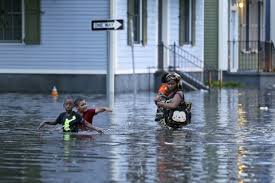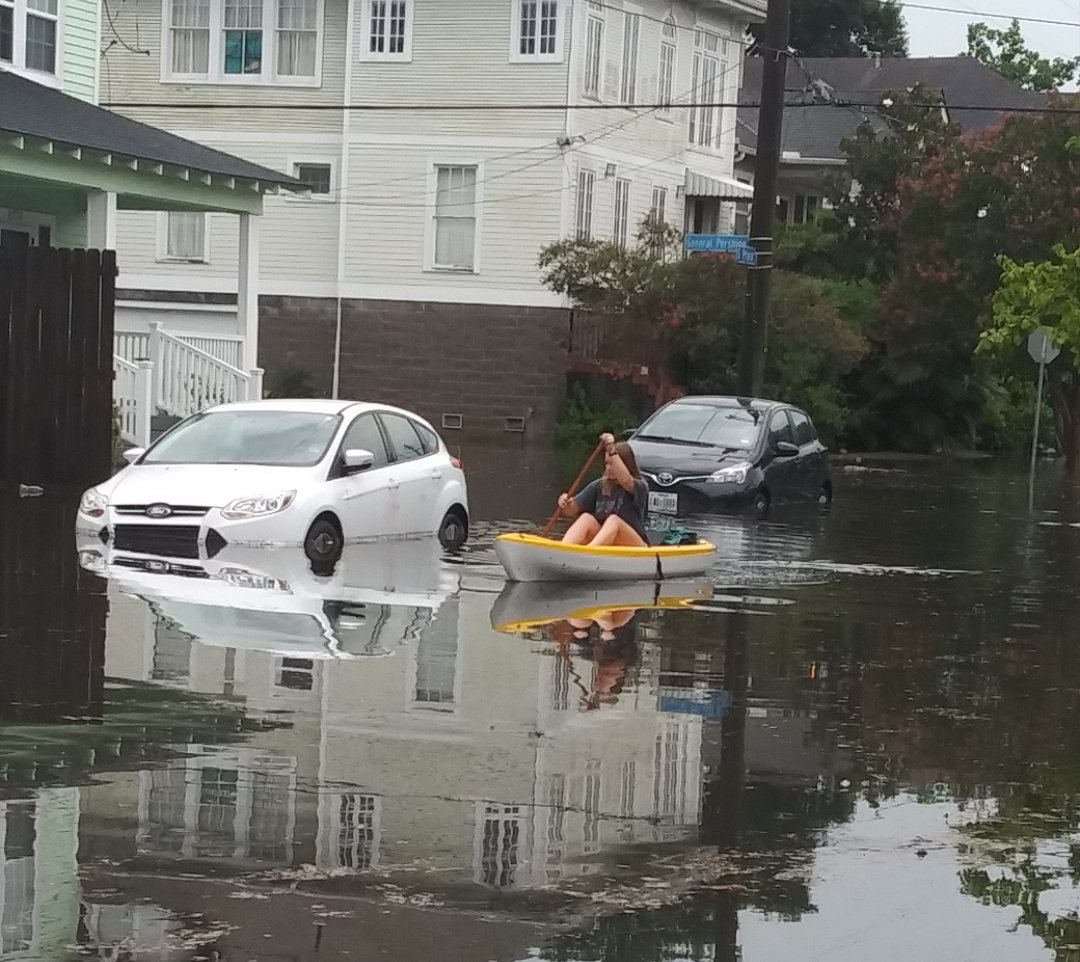By Jeff Thomas | Black Source Media
New Orleans is shrinking. Fast. According to the U.S. Census, the city lost nearly 20,000 residents since 2020. We now have fewer than 370,000 people—a number not seen since the aftermath of Katrina.
Some say we’re still resilient. But resilience is no longer enough. As Michael Hecht of GNO Inc. put it,
“It’s very important to make the distinction between resistant and resilient, because resilience has almost become a cliché or an excuse for poor planning, and that’s not acceptable,” he said.
He’s right. If New Orleans doesn’t invest in resistance—true, physical resistance to disaster—then all the resilience in the world won’t stop the exodus.
A City in Retreat
Ask anyone leaving the city, and they’ll tell you why.
“I moved to Houston,” said Richard Carter, a homeowner from Gentilly. “Bigger house, similar neighborhood. My insurance bill dropped 40%. I miss New Orleans, but I couldn’t afford that insurance.”
He’s not alone. Skyrocketing insurance costs, weak drainage systems, and unreliable public services have pushed thousands to leave. If we keep this up, New Orleans won’t have a tax base to support itself.
Why Cities Like Panama City Beach Are Growing
Ironically, cities like Panama City Beach, Florida face the same hurricane risks. But they’re growing. Why?
Because they invested in resistance—stronger roofs, stricter building codes, and storm-hardened infrastructure. Florida residents receive major insurance discounts for “fortified” homes. They also benefit from a clear, transparent statewide mitigation program that reduces both risk and premiums.
New Orleans? We’re still dragging our feet, caught between broken pipes and political potholes.
What Resistance Looks Like in New Orleans
It’s time for New Orleans to follow suit—not by copying slogans, but by leading with substance. Here’s what real resistance could look like:
1. Citywide Fortification Incentives
- Expand Louisiana’s Fortified Roof Program so more homeowners qualify, including renters and seniors.
- Create a New Orleans Home Hardening Fund, with grants and zero-interest loans for roofs, flood vents, and elevated utilities.
- Offer property tax credits for any homeowner or landlord who reduces storm risk.
2. Storm-Proof Public Infrastructure
- Upgrade every pump, drainage canal, and valve with smart flood tech.
- Use permeable streets, underground water tanks, and green spaces to hold stormwater.
- Publish a storm-readiness score for every neighborhood, updated yearly.

3. Insurance Reform and Relief
- Lobby the legislature to allow for a local insurance cooperative.
- Reward residents with reduced permit fees when they mitigate their own risk.
- Use city-owned land to pilot low-risk, low-cost housing with bundled insurance.
4. Turn the Culture of Risk into a Culture of Preparedness
- Launch a “Resist the Storm” campaign: Free home evaluations, toolkits, community training days.
- Partner with HBCUs and local trade schools to train young people in designing hardened retrofitted homes and mitigation skills.
The Election Test
With all major city offices up for grabs this fall—mayor, councilmembers, sheriff, and assessor —New Orleanians must ask:
Who will lead the resistance? Who will lower our bills, harden our homes, and keep us here?
It’s not enough to clap for resilience. We need real solutions that make staying safe and staying home possible.
Related: In Louisiana, Insurance is Too Damn High
Resistance Is the New Resilience
Let’s be clear: if New Orleans dies, it won’t be from one big hurricane. It will be from thousands of quiet departures—families who couldn’t take the cost, the risk, or the stress.
But we can stop it. And we can resist.
We can build stronger roofs, lower insurance premiums, and protect the neighborhoods we love.
We can choose leaders who understand that storm protection isn’t a luxury—it’s a survival tool.
The time for passive recovery is over. The era of strategic resistance must begin.
If New Orleans gets this right, we won’t just survive. We’ll become a national model for how to stay, thrive, and protect our people—no matter the storm.


See link: FrankVicidomina.com/keeping-new-orleans-dry